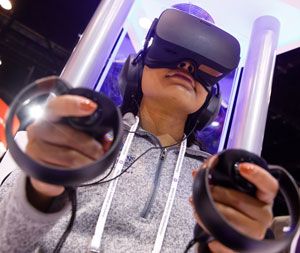Diversifying the Profession and Strengthening Patient Relations

Michelle Colbert, a Johns Hopkins School of Medicine student and Minority Ophthalmology Mentoring Program participant, explored cutting-edge devices in the exhibit hall during Student Engagement Weekend at AAO 2018.
The goal of the Minority Ophthalmology Mentoring program, a partnership between the American Academy of Ophthalmology and Association of University Professors of Ophthalmology (AUPO), is to encourage underrepresented minorities — African Americans, Hispanics and Native Americans — to pursue a career in ophthalmology. Doctor-patient interactions are often improved when the individuals share common backgrounds. However, African- American, Hispanic and Native American ophthalmologists are underrepresented when compared to the U.S. population. Through mentoring, underrepresented minority residents in training programs can help bridge the cultural gap. Minority residents enrich the education of those training with them and provide perspective to improve cultural understanding and empathy. Minority physicians are also more likely to practice in low-resource areas, enabling underserved communities to access eye care.
Building a future for minority ophthalmologists
Program faculty serve as champions for the students and the training programs by assisting with outreach to medical students, department shadowing, research guidance and more. All second-year medical students receive access to a seven-month, web-based USMLE Step 1 exam preparation program. The program, supported by a five-year funding commitment from the Academy and the Association of University Professors of Ophthalmology, provides resources to both first- and second-year medical students, including books and question banks. The program’s inaugural class of 22 medical students attended AAO 2018 in Chicago, where they spent the weekend learning about the wide variety of professional pathways for ophthalmologists. By the time the program ended, student evaluations indicated that 100 percent had “high interest” in ophthalmology, compared with 23 percent prior to attending the program. Watch the video, “Changing the Face of Ophthalmology,” to hear from the students and physician leaders firsthand.